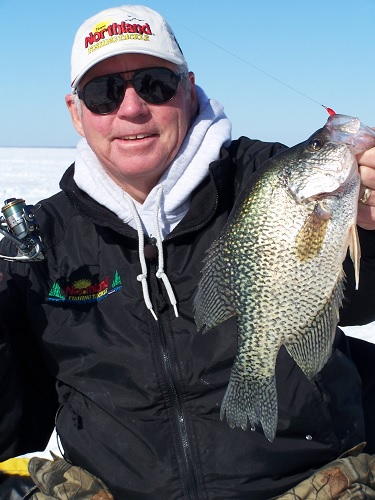 Most bodies of water across the Midwest now have a coat of ice, and it looks like the fish have been eagerly awaiting the ice. Many anglers are reporting outstanding fishing when the weather is right. Fish are kind of like most fishermen. They don’t like the extreme cold weather too much, but when the weather is warm and stable, they want something to eat. Unlike fishermen, fish of many species like to eat spoons, not eat with them. If you want to catch fish under the ice, you really should try using spoons.
Most bodies of water across the Midwest now have a coat of ice, and it looks like the fish have been eagerly awaiting the ice. Many anglers are reporting outstanding fishing when the weather is right. Fish are kind of like most fishermen. They don’t like the extreme cold weather too much, but when the weather is warm and stable, they want something to eat. Unlike fishermen, fish of many species like to eat spoons, not eat with them. If you want to catch fish under the ice, you really should try using spoons.
Spoons come in a variety of shapes and colors and styles, and most of these shapes and styles have unique characteristics, and these unique characteristics will appeal to the fish in different ways. Here are some things to keep in mind when selecting a spoon.
Many spoons are made of lead. These spoons fall quickly and pretty much straight down. They do a great job in many situations. One of those situations is when “pounding” is a preferred tactic. “Pounding” is when you drop your spoon to the bottom and let it fall right onto the bottom. You then lift it a couple of feet off the bottom and let it fall again right onto the bottom. When your spoon hits the bottom, or “pounds” the bottom, it disrupts the bottom content and you get a little cloud of sand or marl or whatever the bottom is made of. This gets the attention of the fish, and hopefully they come over to investigate, see your spoon, and eat it. “Pounding” is a great technique and works often, but there are times when the fish prefer something else.
When “pounding” isn’t working, consider going to a different style of spoon. Tie on a spoon that has some bend in it. The new Flutter Spoon is a good example of that. It’s made with a material called Z-ALLOY. It’s lead-free and wobbles as it falls. This wobbling slows down the fall, and, in many situations, will be more appealing to the fish. The Flutter Spoon is new and the fish haven’t seen anything like it before, and they’re really going for it. It’s just a different action: It doesn’t work all the time, but so far it’s been working way more often than not.
As with any type of lure, color and size are a consideration when it comes to appealing to the fish. Keep an eye on your sonar. If you see fish looking but not eating, try a different color or size or action.
We’re usually attaching a piece of Impulse plastic or a piece of minnow or several spikes or waxworms to the spoon. That added color and taste make the fish more likely to eat the spoon most of the time.
One last very important consideration: Spoons can twist your line. Tie a swivel up the line a bit and attach the spoon to your line with just a snap, or tie a snap/swivel to your line and attach the spoon directly to the snap/swivel. This should eliminate most line twist.
Spoons are an outstanding lure-style during any season, but are something you should try right now if you want to experience more ice-fishing success.
To see all the most recent episodes of Fishing the Midwest television, new fishing related video tips, and fishing articles from the past, visit fishingthemidwest.com If you do Facebook, check us out for a variety of fishing related things.
By Bob Jensen. PHOTO -This crappie fell for a spoon that was pounding the bottom. Duane Peterson used a bright spoon in stained water to catch several nice crappies in a short period of time.
